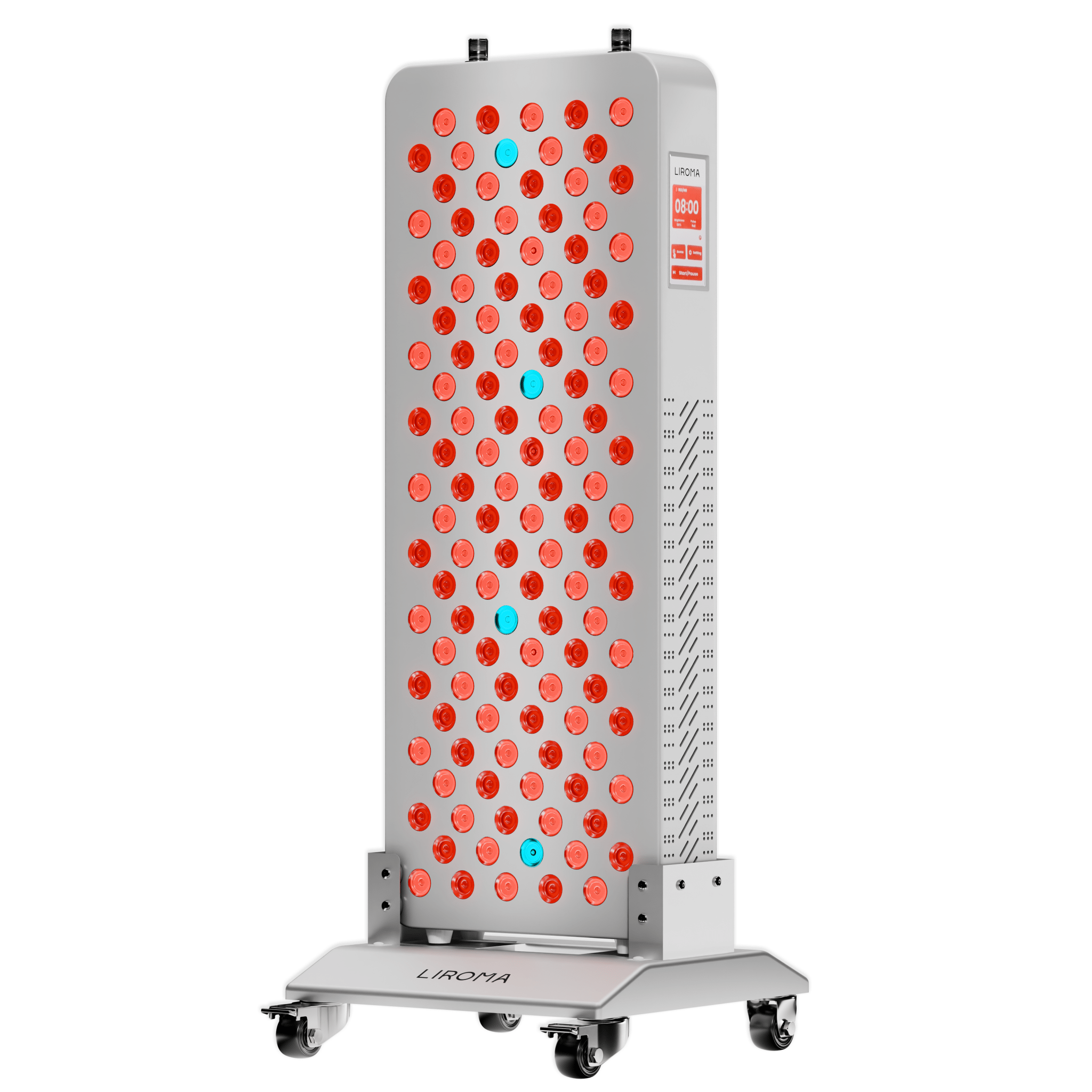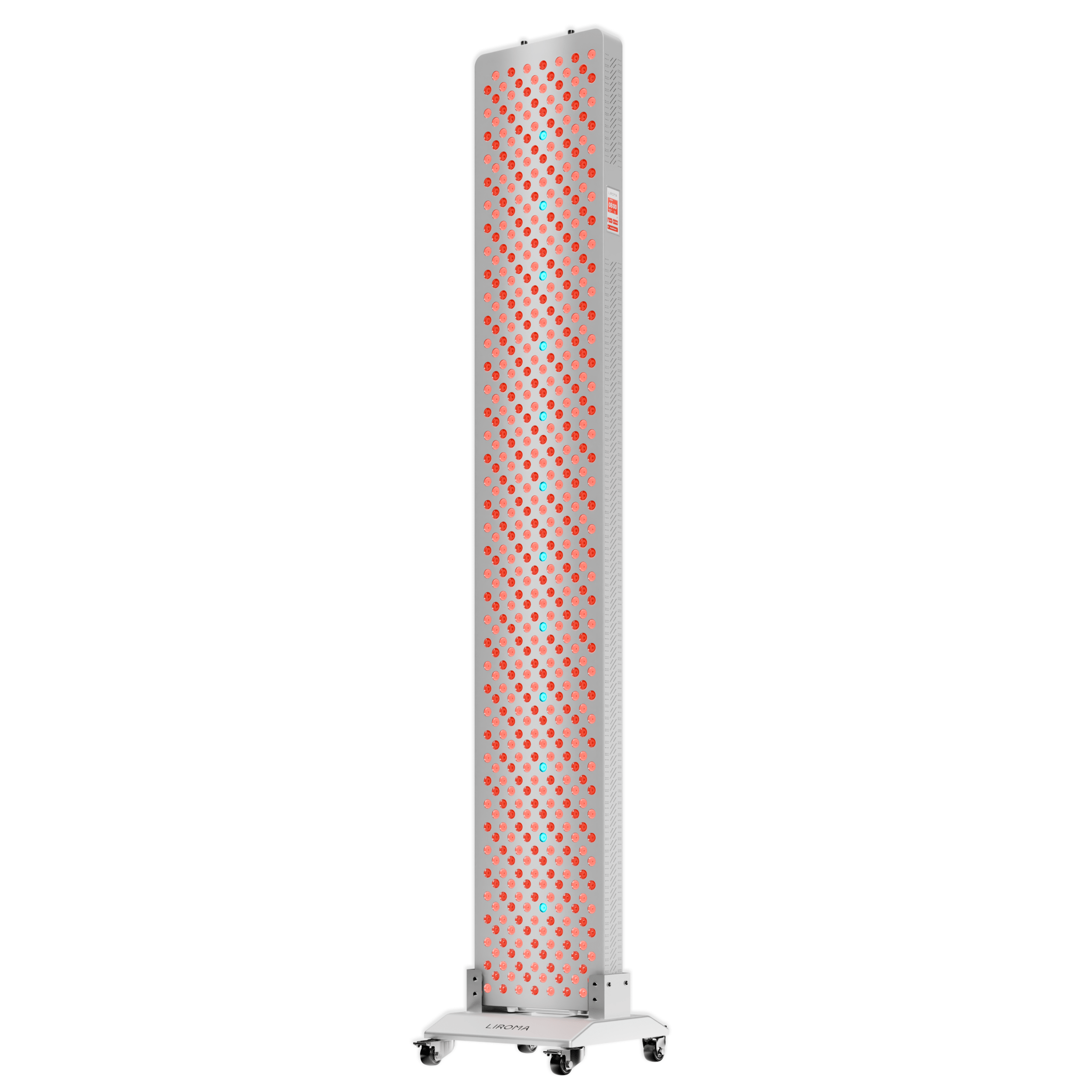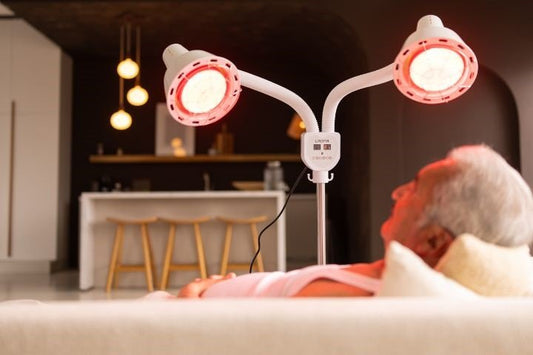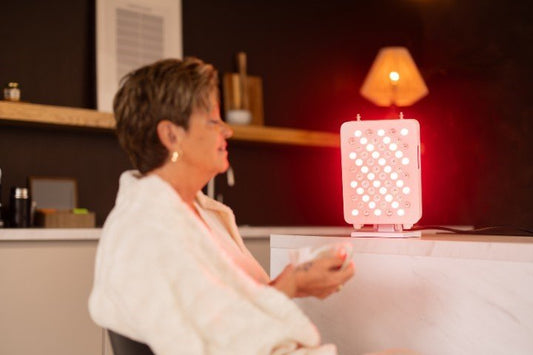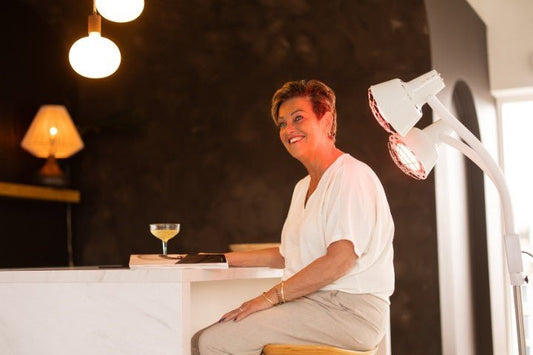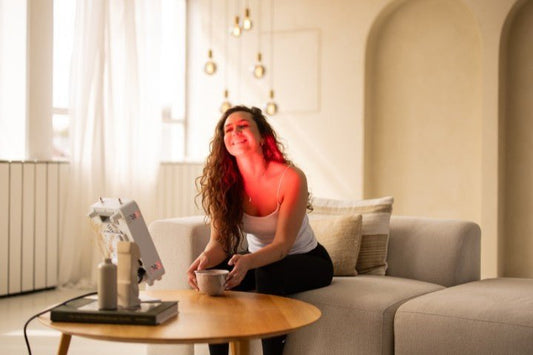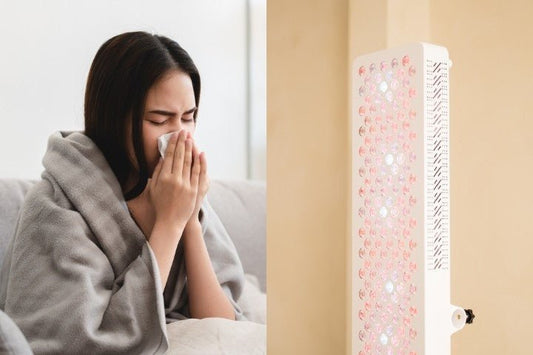Still struggling with fatigue, shortness of breath or brain fog after a COVID-19 infection? You’re not alone. It’s estimated that 1 in 5 people experience lingering symptoms, even years after the virus. For many, the search for natural ways to support recovery is part of daily life.
Red light therapy is gaining attention as a supportive approach for long COVID. In this article, we’ll explain what it is, how it works, and how it may help relieve post-COVID symptoms.
Please note: This article does not serve as medical advice. It is based on our own knowledge, customer experiences, and various online sources.
Table of contents

What is long COVID (post-COVID)?
Long COVID, also known as post-COVID syndrome, refers to symptoms that persist or appear after a COVID-19 infection, even in people who had mild cases. The World Health Organization (WHO) defines long COVID as symptoms lasting more than 12 weeks that cannot be explained by another condition.
What makes long COVID so complex is that it affects multiple body systems, from breathing to concentration. And unfortunately, there is still no universal treatment that works for everyone.
What are the symptoms?
Post-COVID symptoms vary widely. Below are some of the most common:
- Severe fatigue, even after light activity
- Shortness of breath or tight chest
- Muscle and joint pain
- Concentration issues (brain fog)
- Headaches
- Sleep disturbances
- Chest pain
- Loss of smell or taste
- Dizziness
- Heart palpitations
Symptoms differ from person to person. Some recover within weeks, while others remain affected for months or even years.

How does red light therapy work?
Red light therapy (also known as light therapy or photobiomodulation) uses specific wavelengths of red and near-infrared light (between 630 and 850 nanometers). These wavelengths penetrate the skin deeply, without causing harm.
Here’s what happens in your body:
- Light particles are absorbed by mitochondria (your cells’ energy factories)
- This stimulates ATP (adenosine triphosphate) production, your body’s main energy source
- The result: enhanced cellular repair, reduced inflammation, and improved blood circulation
These effects may help your body recover from stress or damage caused by viral infections like COVID-19.

How can red light help with post-COVID symptoms?
While research is still ongoing, early results are promising. Here are four ways red light therapy may support recovery from long COVID:
1. More energy during extreme fatigue
Fatigue is one of the most limiting long COVID symptoms. Since red light therapy helps increase cellular energy production, many users report feeling more physically and mentally energized after a few weeks of use.
2. Reduced pain and inflammation
Muscle and joint pain, often caused by lingering inflammation, is common. Red light therapy has anti-inflammatory effects and may reduce pain and improve mobility over time.
3. Improved breathing
COVID-19 can cause lasting inflammation or damage to the lungs. By improving blood flow and reducing chest inflammation, red light therapy may help make breathing feel easier.
4. Clearer thinking and less brain fog
When used near the head (transcranial therapy), red light may support brain function by improving oxygenation and cellular energy. Some people experience better focus and less mental fatigue.

How do I use red light therapy devices?
One of the biggest advantages of red light therapy is that it’s easy to use at home. While professional guidance is always advised in case of doubt, you don’t need a clinic to get started.
- Choose a quality device: A red light panel or lamp with wavelengths between 660 nm (red) and 850 nm (near-infrared) is ideal.
- Target the right areas: For long COVID, focus on:
- Your chest (for breathing issues)
- Your upper back
- Your head or neck (for brain fog or headaches)
- Session length: Start with 10–15 minutes per area, 3 to 5 times per week.
- Consistency is key: Most people notice improvements after several weeks of regular use.
- Use on bare skin, at a distance of about 10–30 cm from the device.

What does science say? Studies & research
Scientific research on red light therapy is growing, especially in areas like inflammation, fatigue, and cognitive function. Research specifically on long COVID is still limited, but the first findings are encouraging:
1. Reducing lung inflammation & improving oxygenation
A pilot study on COVID-19 patients showed that red light therapy can reduce lung inflammation and increase oxygen saturation, potentially valuable for long COVID sufferers with ongoing respiratory symptoms.
Study: https://pubmed.ncbi.nlm.nih.gov/33043132/
2. Relieving cognitive issues
A small study using transcranial red light therapy on long COVID patients reported improvements in memory, clarity of thinking, and focus.
Study: https://www.medrxiv.org/content/10.1101/2025.07.24.25331961v1.full
3. Supporting cellular energy metabolism
One of the key mechanisms of red light therapy is boosting ATP production, your body’s cellular fuel. This may help relieve the deep fatigue seen in long COVID.
Study: https://pubmed.ncbi.nlm.nih.gov/28748217/
4. Possible support for breathing issues
A 2021 review concluded that red light therapy may help reduce lung inflammation, improve oxygen uptake, and support immune regulation, all potentially useful in post-COVID recovery.
Study: https://pmc.ncbi.nlm.nih.gov/articles/PMC8233727/
5. New insights: light therapy as complementary treatment
A 2024 review found that red and near-infrared light therapy may offer complementary support for COVID-19 and long COVID recovery by enhancing tissue repair, oxygen transport, and inflammation control.
Study: https://pmc.ncbi.nlm.nih.gov/articles/PMC11022193/
Important: While the results are promising, more research is needed before drawing firm conclusions about its effectiveness for long COVID specifically.

Customer experiences
Michiel (40), paramedic – My experience with red light therapy
My name is Michiel, I’m 40 years old and work as a paramedic in Maastricht. After being diagnosed with long COVID in June 2022, my life changed dramatically. Activities I used to enjoy, working, exercising, spending time with my family, became exhausting. Even a short walk left me feeling sick and wiped out the next day.
On the advice of friends, I started using red light therapy. I use two devices: the Liroma Armor 500, a small, portable lamp perfect for targeting specific areas, and the Liroma Force RTL300, a larger panel that covers bigger areas in one session.
The Armor 500 helps me treat muscle soreness more precisely, while the Force RTL300 creates a gentle warmth that relaxes my muscles, especially after a long day. Using red light therapy every other day has helped speed up my recovery and boost my energy levels.
I use the lights in a quiet space without distractions, no music, no phone, just me and the light. That calm moment helps me recharge both physically and mentally.
Although red light therapy isn’t a cure for long COVID, it gives me structure, relief, and a sense of actively working on my recovery. I hope my story encourages others to explore this therapy too.

Frequently Asked Questions
What’s the difference between post-COVID and long COVID?
Both terms refer to ongoing symptoms after COVID-19. “Long COVID” highlights the duration of symptoms, “Post-COVID” emphasizes that the symptoms occur after the initial infection. They are often used interchangeably.
Is red light therapy safe?
Yes, in most cases, red light therapy is considered safe. It’s non-invasive and doesn’t harm the skin. Still, you should consult your doctor if you’re on medication or have pre-existing conditions.
When will I start noticing results?
Most users report improvement after 3–4 weeks of consistent use. Some see changes sooner, others later. Consistency is key.
Can I combine red light therapy with other treatments?
Yes, red light therapy is often used alongside other treatments, such as physical therapy, breathing exercises, or supplements. Always consult a healthcare provider before combining therapies.



